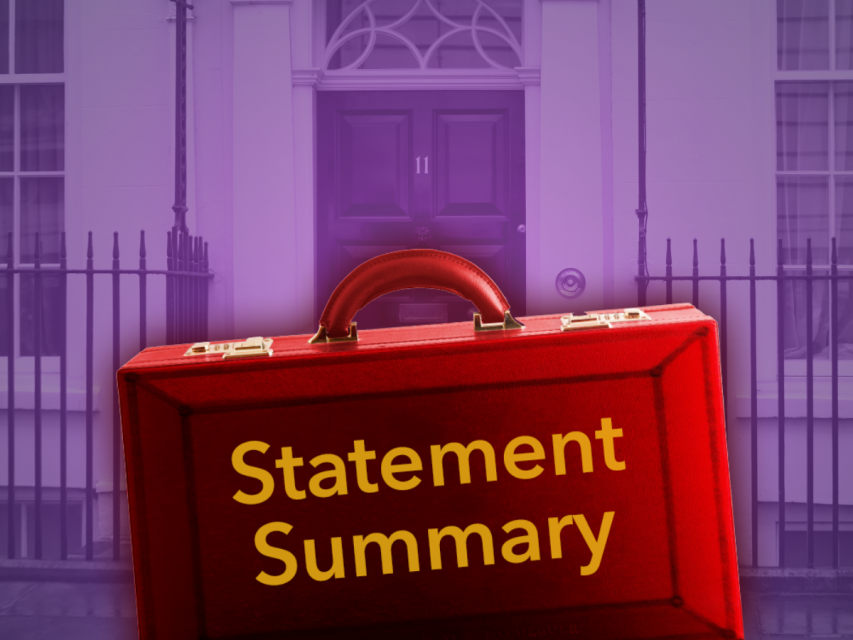Since they were introduced in 1999, Individual Savings Accounts (ISAs) have offered savings and investment opportunities while preventing people from being taxed on their interest. They were brought in by the government as an alternative option to other savings accounts.
Today, ISAs continue to be a popular financial product. However, there are different types available and different ways to use these to optimise and grow existing savings portfolios.
If you have an ISA, this guide takes you through everything from ISA transfer rules to the best time to make the switch. Whether you have a new provider in mind or you’re considering different options available, you’ll need to know how to transfer an ISA successfully.
What is an ISA transfer?
An ISA transfer is where you move savings you have in one ISA to a different ISA account without losing the tax-free status that comes with this financial product. The transfer process is simple but must be done properly to keep your savings within the tax-free wrapper.
You don’t have to physically take money from one provider to invest with another. Contact your new provider and they will help you with the transfer process.
There are reasons why you might want to transfer. If you have a Cash ISA, you might have seen that another provider is offering better interest rates or promotional offers. Or if you have a Stocks and Shares ISA, different investment opportunities might be available elsewhere. Alternatively, it could simply be that you have a lot of ISAs and you want to consolidate your savings or investments by transferring everything to one provider.
Whatever the reason, there are different factors to be aware of.
What to know before transferring an ISA
Before transferring an ISA, it’s important to know how an ISA works. The tax year runs from 6 April to 5 April and there are four different types of ISA available. These are:
- Stocks and Shares ISAs
- Cash ISAs
- Lifetime ISAs
- Innovative Finance ISAs
It’s worth noting that both Cash and Stocks and Shares versions of Junior ISAs are also available. However, the returns you get from Stocks and Shares Junior ISAs aren’t limited by the provider’s interest rate, unlike with the cash version. With investing, your capital is at risk. Investments can fluctuate in value and you may get back less than you invest. You should ensure your contribution does not result in your total ISA contributions within the tax year exceeding £20,000.
As long as you meet the eligibility criteria for each type, you can have as many ISAs as you like, but there are restrictions in place:
- You can only pay into one ISA of each type per tax year.
- If you have more than one ISA, make sure you don’t exceed your personal allowance. For the 2024/25 tax year, this allowance is set at £20,000. You can save up to this amount in one ISA account or share out the allowance across the other types of ISA.
For instance, you might want to save £20,000 in your Stocks and Shares ISA or you might want to spread this out as £10,000 in your Stocks and Shares ISA and £10,000 in your Cash ISA.
The ISA transfer rules
If you currently have savings in an ISA and you want to transfer the balance elsewhere, there are rules you need to be aware of. By following these, you can avoid owing tax.
The rules when transferring your cash or Stocks and Shares ISA are:
- You can transfer the money from one provider to another. This won’t affect your annual ISA allowance. So, if you have a Stocks and Shares ISA you can move your savings in this account to a Stocks and Shares ISA with a different provider.
- You can also move the money in your ISA account to a different ISA type. For example, you might want to swap your Cash ISA to a Stocks and Shares ISA. Just check that your new provider accepts transfers.
- Transfers don’t affect your annual ISA allowance. You can still contribute up to the annual ISA allowance for the tax year that you are making the transfer in.
- If you want to transfer money you’ve invested in an ISA during the current tax year, you must transfer all of it. If you’re transferring money from previous years, you can transfer all or part of your savings.
The rules listed apply to Cash and Stocks and Shares ISAs. With Lifetime ISAs, it’s possible to transfer to a different type of ISA. However, if you plan to do this before the age of 60, you will need to pay a withdrawal fee of 25%.
If you have an Innovative Finance ISA, you can only transfer cash to another provider. Due to the nature of this type of ISA, you can’t transfer other investments from it.
It’s worth checking with your provider to see if there are any other restrictions. With investing, your capital is at risk. Investments can fluctuate in value and you may get back less than you invest.
Will I be charged for transferring an ISA?
You may have to pay a charge when you transfer your ISA. Before beginning the transfer process, check with both your current and new providers to understand any costs.
It’s unlikely that you’ll be charged if you are transferring between Cash ISAs, or from a Cash ISA into a Stocks and Shares ISA. If you decide to transfer to True Potential’s Stocks and Shares ISA, you won’t pay anything to make the swap. If you’re transferring a Stocks and Shares ISA to a Cash ISA, there might be a transaction charge for the process of selling the assets in your Stocks and Shares.
ISA provider rules apply.
How long do ISA transfers take?
ISA transfers should take on average 15 working days for transfers between Cash ISAs. You can expect other types of transfers to take on average 30 calendar days. If the transfer is taking longer than this, speak to your ISA provider for an update.
For the transfer of your investments held in an Innovative Finance ISA, you’ll need to ask your provider how long it will take.
When is the best time to transfer my ISA?
You can transfer your ISA at any time. Ultimately, the right time depends on what works for you. Once you’ve researched your new provider, checked what the process involves, and decided to move your cash or investments, you’ll be able to begin the transfer process.
Begin by contacting your new provider to arrange the transfer. They’ll ask you to fill in an ISA transfer form.
Choosing the right ISA for your needs
Whether you’ve decided to transfer ISAs or you’re doing research, assess what is best for your circumstances. Start with your savings goals, then consider what type of ISA and provider could be the ideal match.
At True Potential, we provide a smooth transfer service to our Stocks and Shares ISA. We’ll make sure you retain your tax-free status and get the most out of this savings opportunity.
If you’re already an investor with True Potential, and require support with an ISA transfer, speak to your financial adviser or call our Relationship Management team on 0191 500 9164. They’re available 7am – 8pm weekdays and 8am – 12pm on Saturdays.
If you do not currently invest with True Potential, and would like to learn more about our ISAs, contact us today – we are happy to speak through available options and help you do more with your money. Please call one of our experts on 0191 625 0350 to get started.
With investing, your capital is at risk. Investments can fluctuate in value and you may get back less than you invest. You should ensure your contribution does not result in your total ISA contributions within the tax year exceeding £20,000. Tax rules can change at any time. ISA eligibility and tax rules apply. This blog is not personal recommendation or financial advice.





